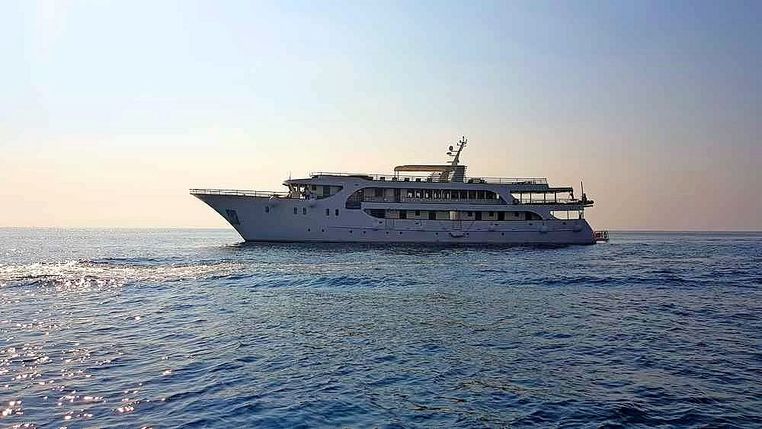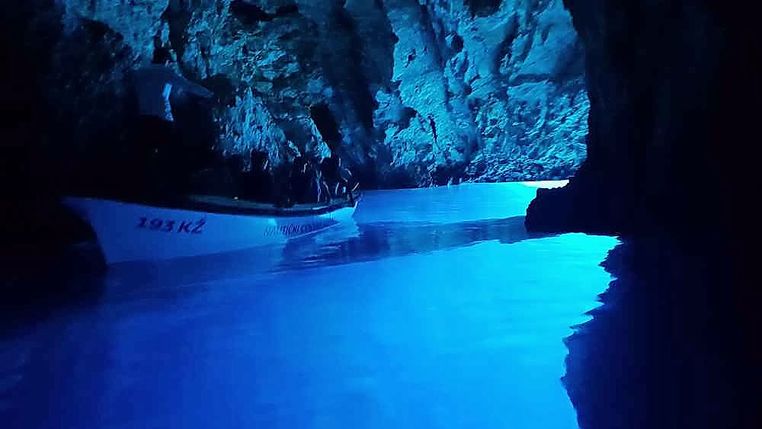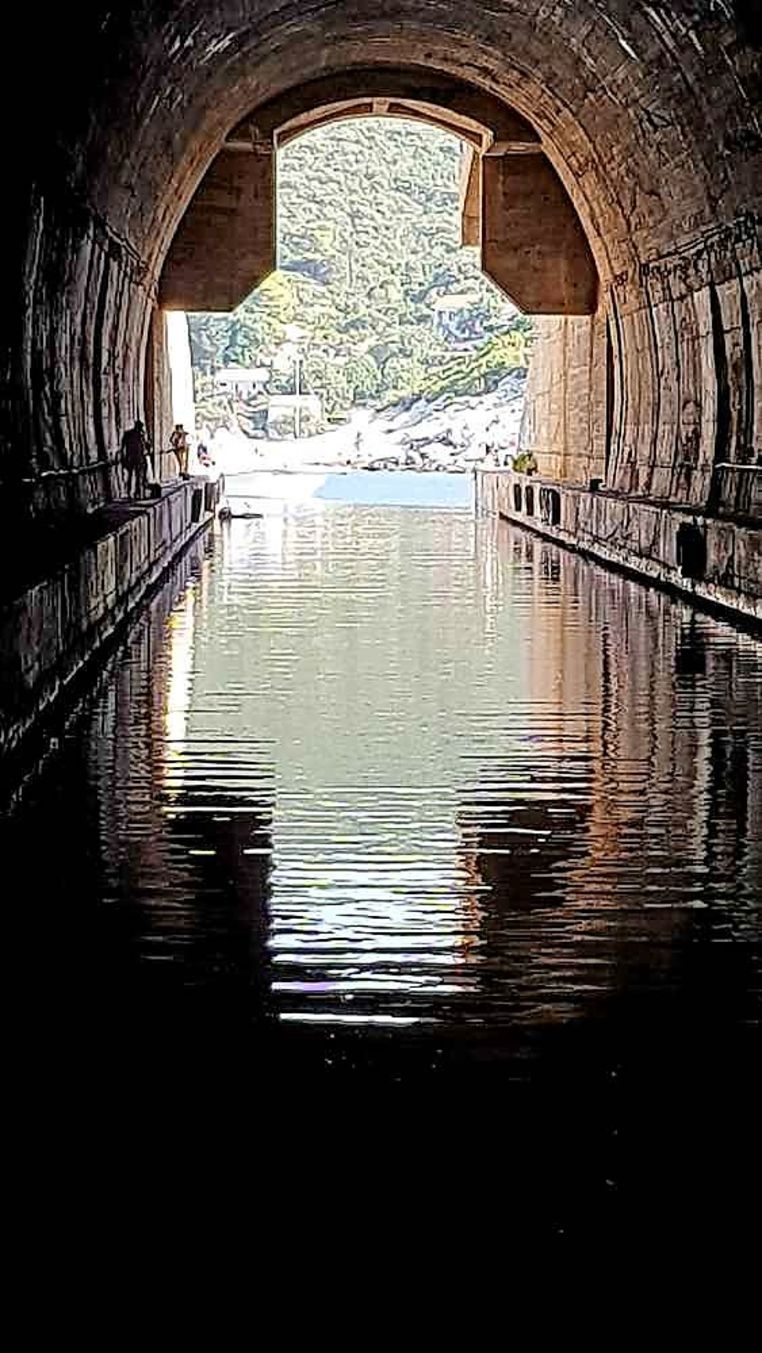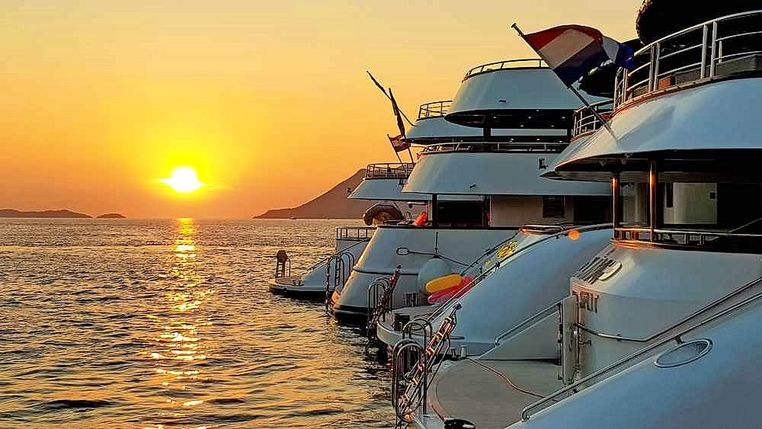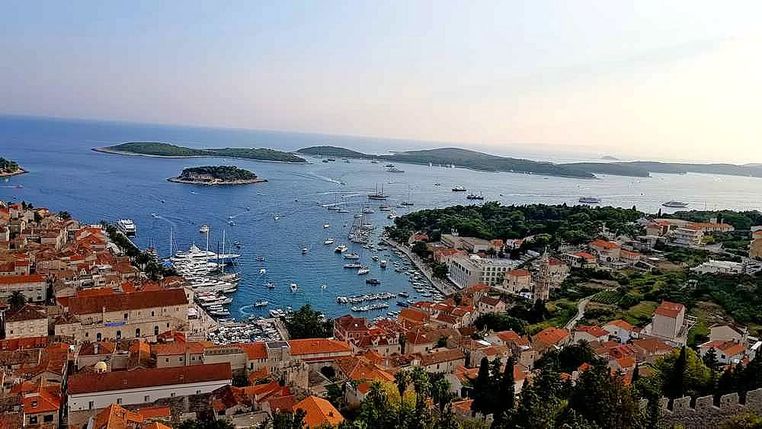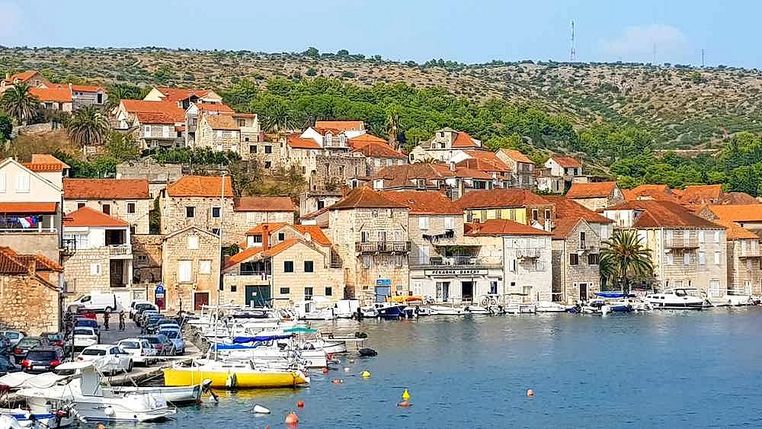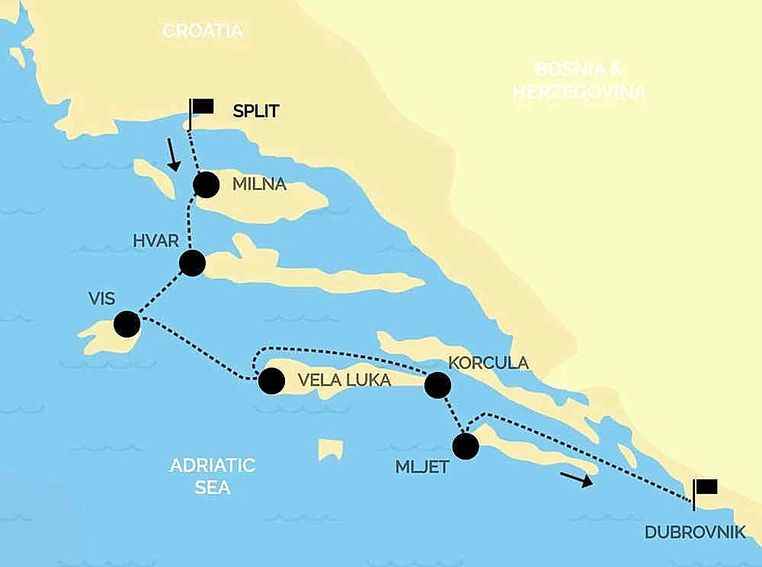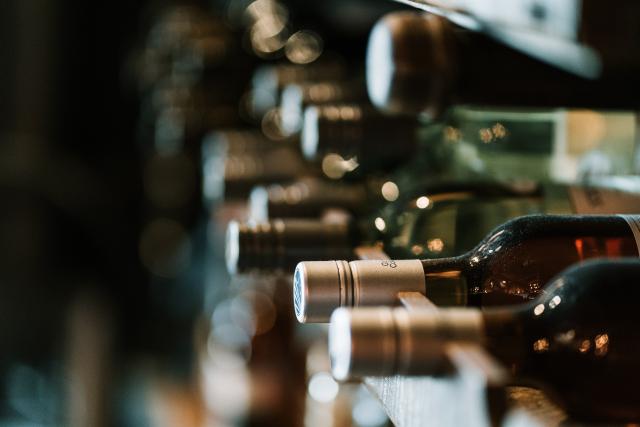We have been wowed before. Rome’s Colosseum, France’s spectacular Palace of Versailles, the canals and narrow streets of Venice.
So how would a seven day luxury cruise through Croatia’s Dalmatian Coast stack up?
The stunning islands dotted with mystery and filled with history instantly seduced us. Centuries-old fortresses and battlements provided a dramatic backdrop to each island.
Our adventure started in Split, where the Palace of Roman Emperor Diocletian (built around the fourth century AD) looms large and consumes almost half the city. A wondrous start to our journey.
From there, we boarded our Sail Croatia Elegance cruise ship, the Diamond. Initial concern that we had booked a 20-something party boat thankfully proved baseless.
The vessel itself had a capacity for just 40 guests, with 19 cabins – just 24 people were on our cruise, mostly Australian. Our cabin was above deck, with plenty of room to move and a large ensuite.

Our first overnight stop was the waterside village of Milna on the island of Brac, famous for providing the limestone used to build the White House in Washington.
Second stop was the port city of Hvar, where we first explored the largest piazza in the Adriatic before making the steep climb to the hilltop fortress, which offers extraordinary views of the old town and port, filled with multi-million dollar private yachts.
The general routine throughout the week was cruise in the morning, before mooring in a cove for a morning swim.
The waters around Croatia are crystal clear – and salty, but offered some great views for snorkelling.
We would then have a three course lunch aboard ship (every day it was superb) before docking at an island – allowing us to explore by foot, bicycle or vehicle.
Day three we arrived at Vis, the outer most island. It has a remarkable military history dating back to the Venetians. We took a four-hour must-do military history tour of the island, which included astonishing stories of bravery from Allied pilots who used the island for emergency landings during World War II.
The island fell into then-Yugoslavia’s hands after the war, and was essentially a closed military base until the late 1980s, when it was finally opened up to the public.
We went underground and explored an amazing tunnel network used to supply the major gun installations that covered the four points of the island, before entering a now disused submarine base carved into a mountain – created by former President Tito and used during the Cold War.
The tour continued with a must-stop visit to the famous Blue Cave, (or Blue Grotto) on the island of Bisevo, before taking us to the port of Vela Luka, then Korcula, a grand medieval town and the so-called birthplace of Marco Polo (he at least lived there for a period of time). This port was certainly one of the best.
After a day exploring Mljet, famous for its National Park and two salt lakes, we finally arrived at our final destination, Croatia’s piece de resistance, Dubrovnik.
A walk around the giant walled fortress is a must, as well as shopping in the old town.

Sunset at Korcula.

The MS Diamond


